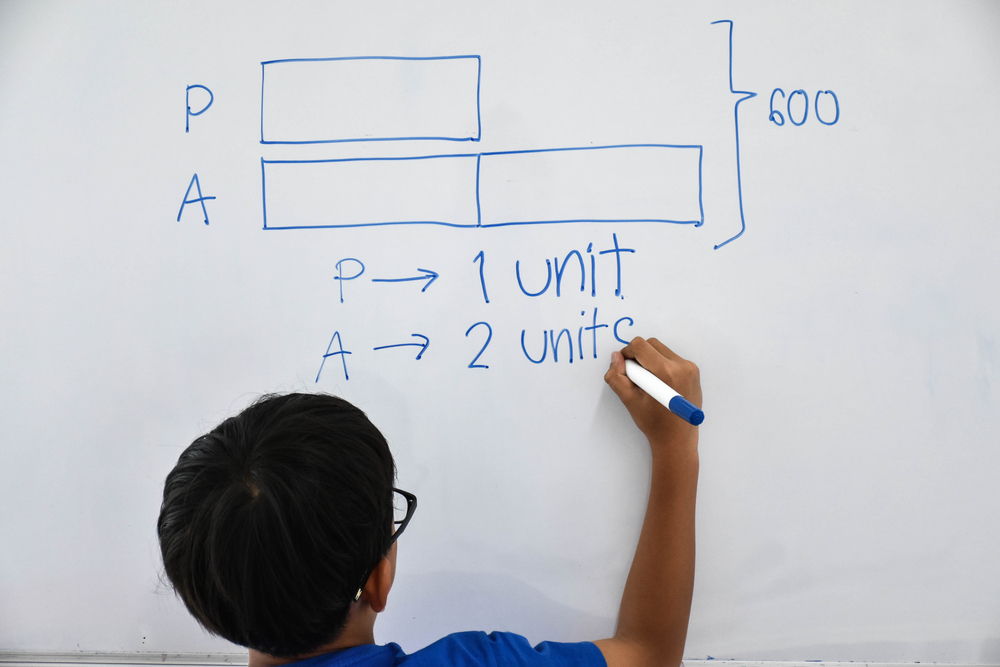Spatial awareness Normal Worksheets for Ages 4-5
14 filtered results
-
From - To
Our Spatial Awareness Normal Worksheets for Ages 4-5 are designed to enhance young children's understanding of spatial relationships and geometry. Through engaging activities, these worksheets aim to help kids recognize shapes, directions, and positions in space. Perfectly suited for preschoolers, the worksheets encourage visual perception and fine motor skills development in a fun and educational manner. Created by experts, these exercises provide a strong foundation for future learning in mathematics and problem-solving. Encourage your child's growth and enjoyment with our high-quality, printable worksheets that turn learning into an exciting adventure.
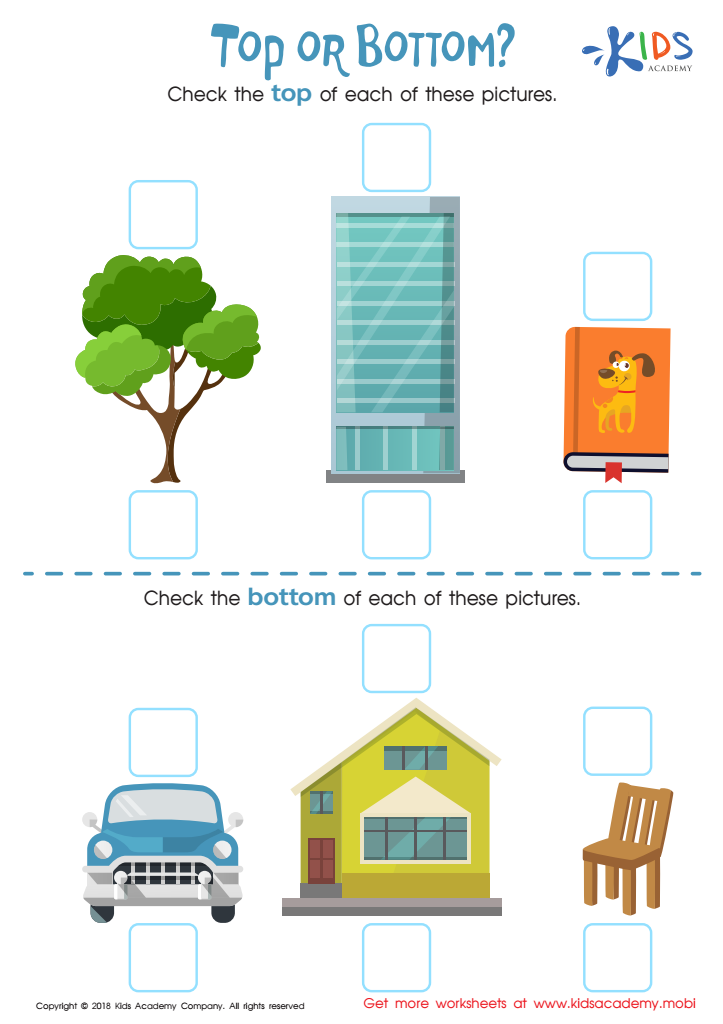

Top or Bottom Worksheet


Uppercase Letters Maze Worksheet
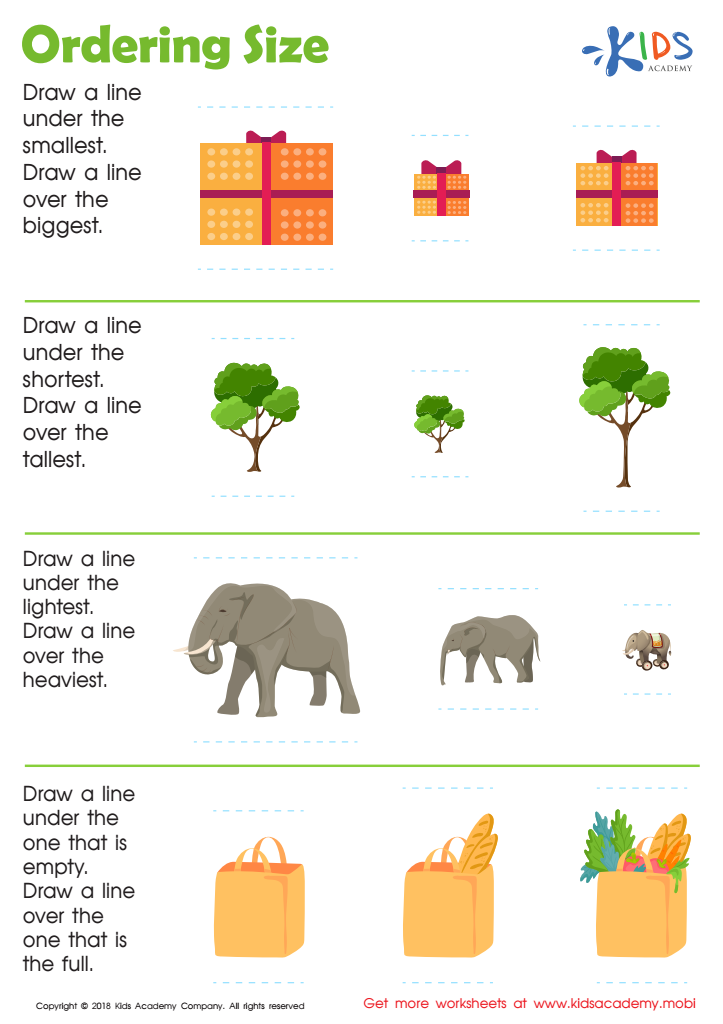

Ordering Size Worksheet
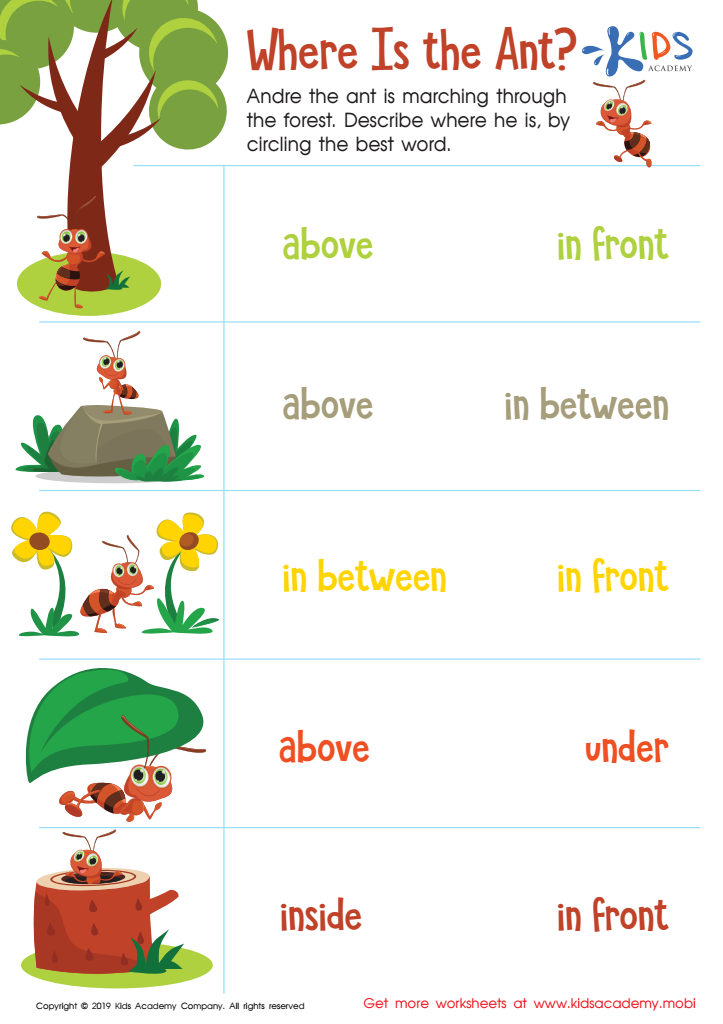

Where Is the Ant? Worksheet
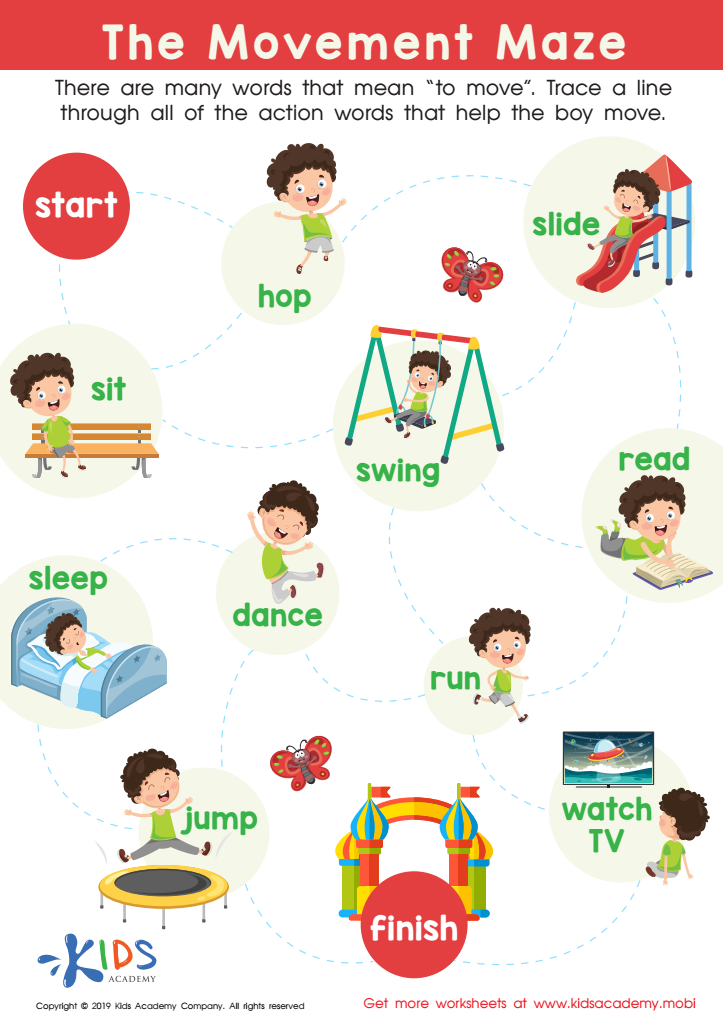

The Movement Maze Worksheet
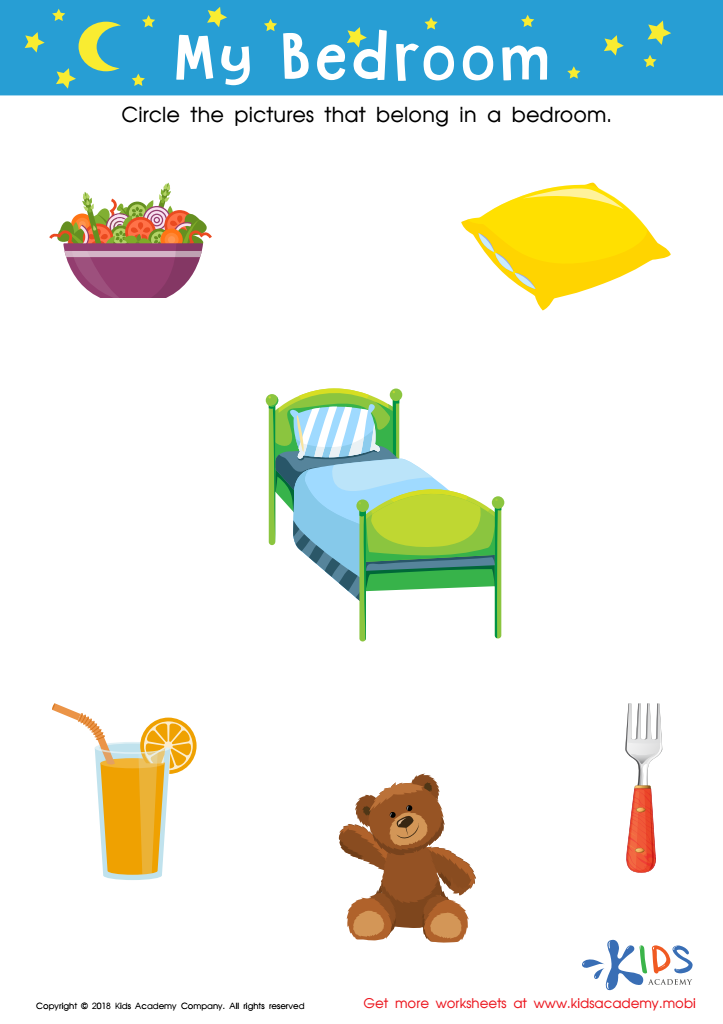

My Bedroom Worksheet
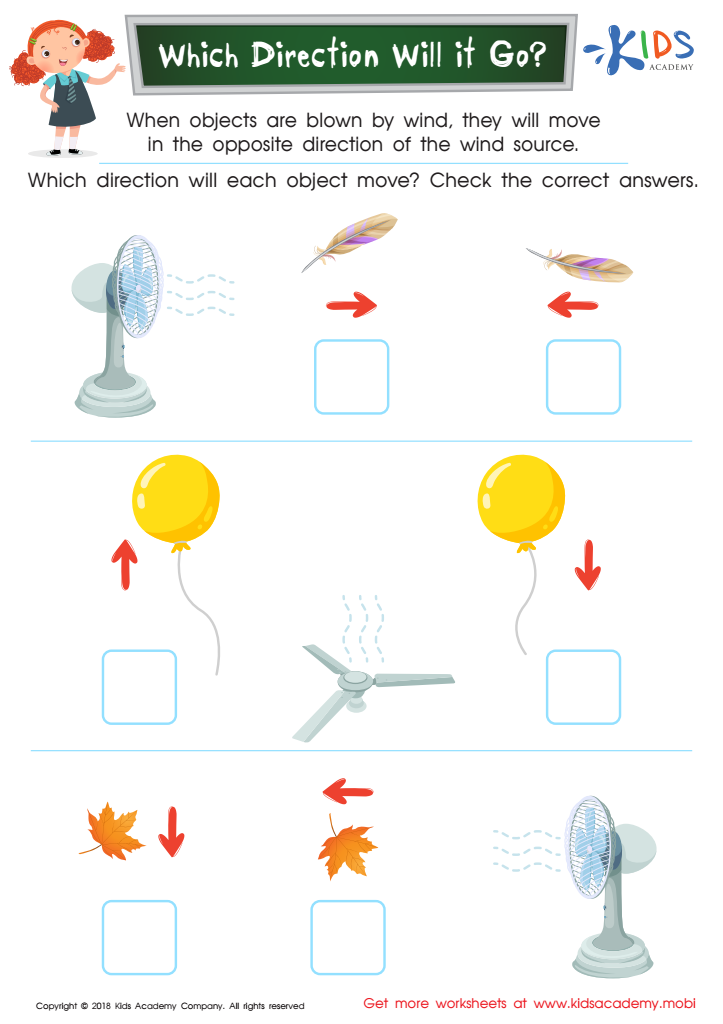

Which Direction Will it Go? Worksheet
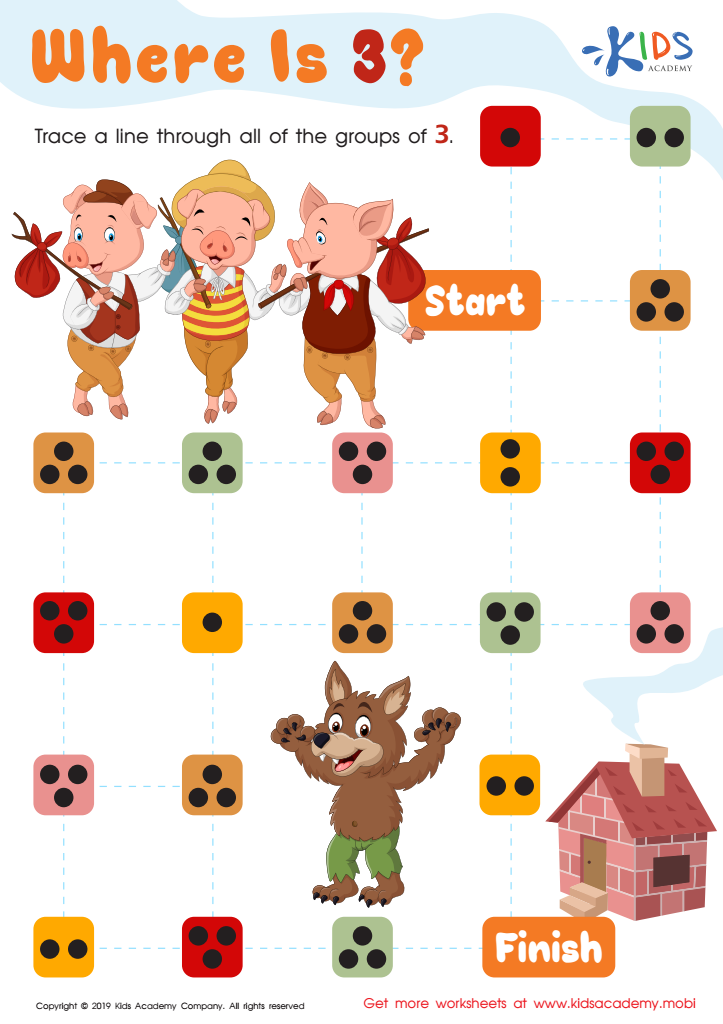

Where Is 3? Worksheet
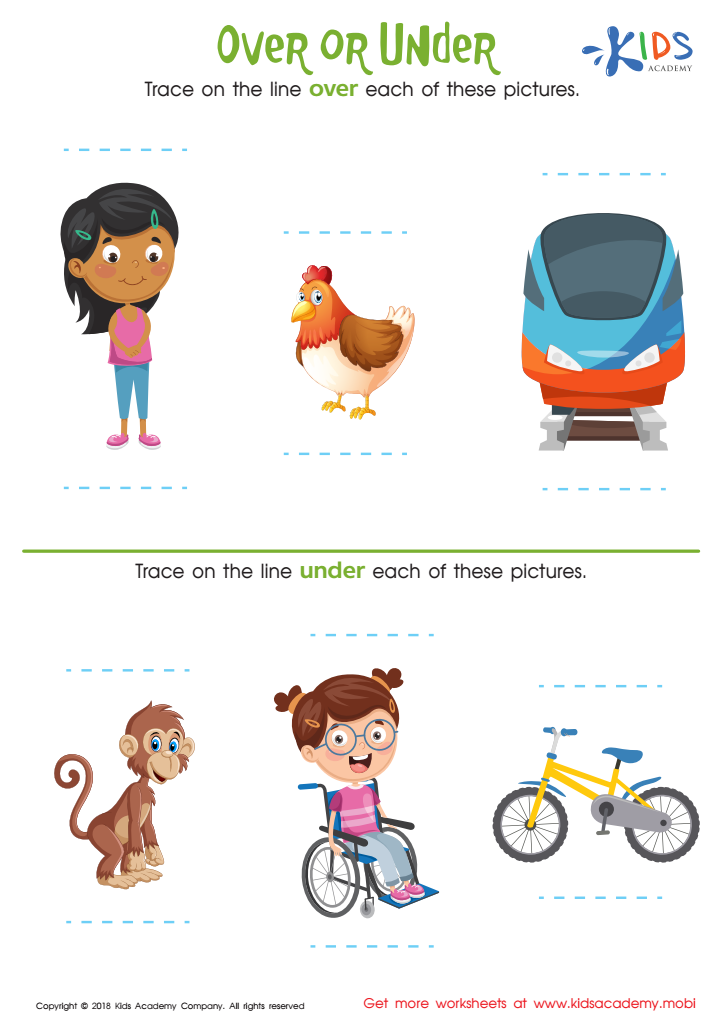

Over or Under Worksheet


In Front or Behind Worksheet
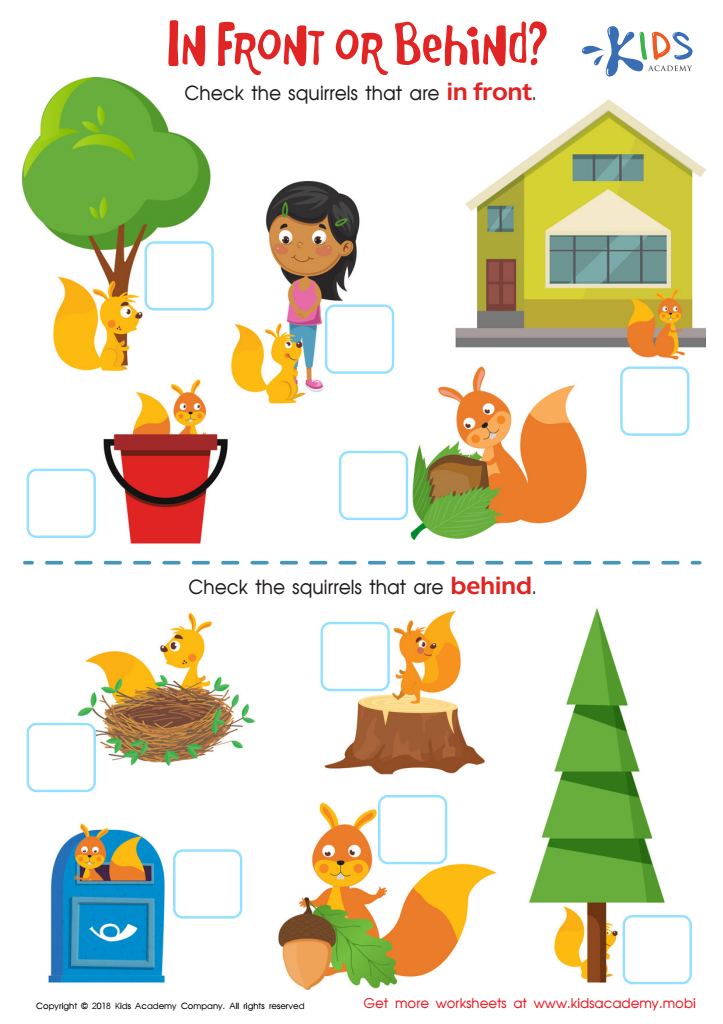

In Front or Behind: Part 2 Worksheet
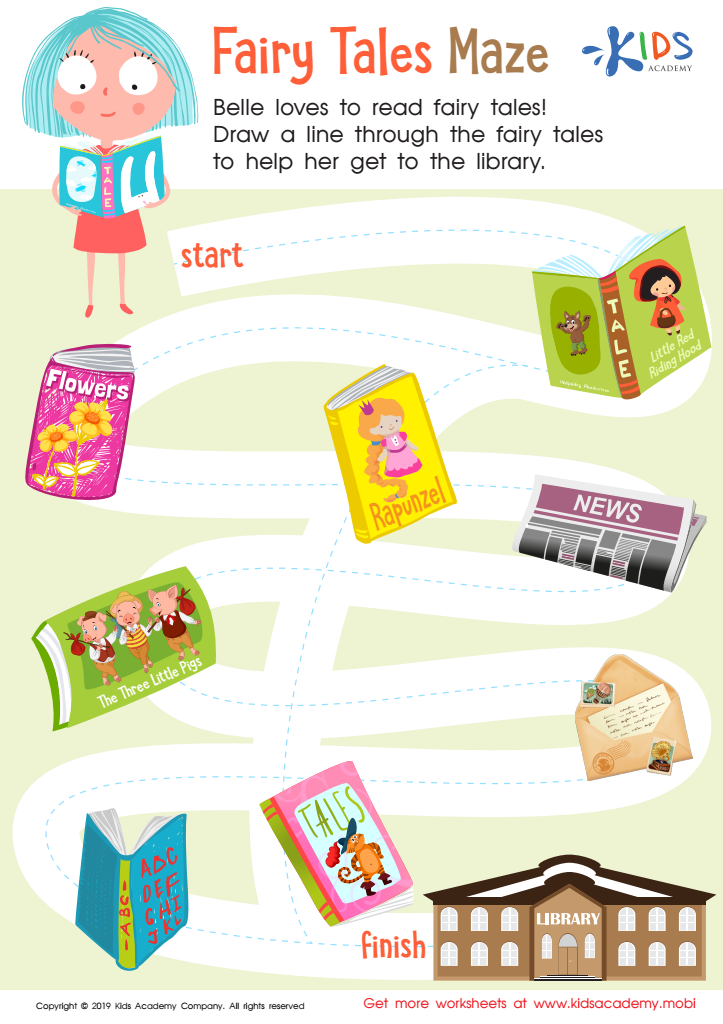

Fairy Tales Maze Worksheet
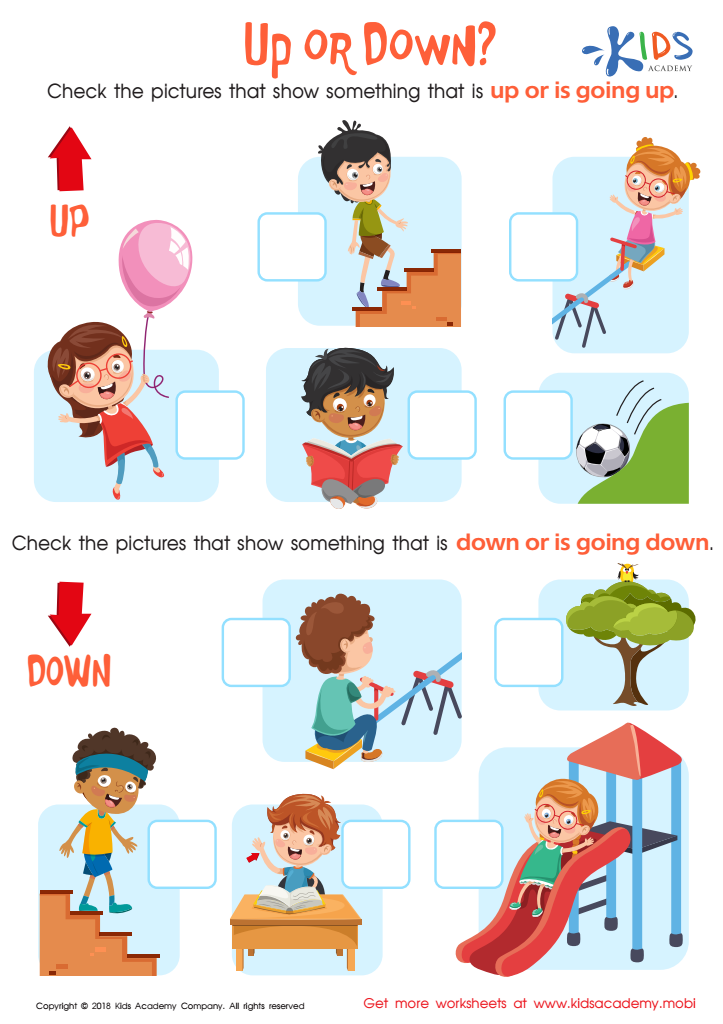

Up or Down Worksheet
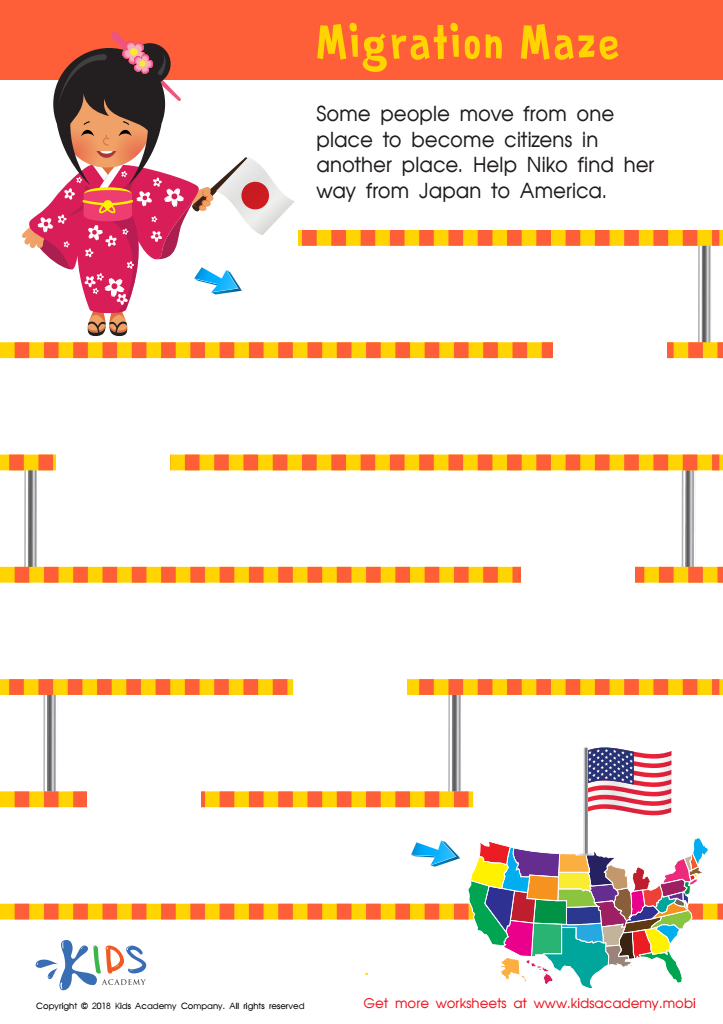

Migration Maze Worksheet
Spatial awareness is the understanding of the body's position in space and how it relates to other objects. For children aged 4-5, developing spatial awareness is crucial and carries multiple benefits that parents and teachers should be deeply invested in.
Firstly, spatial awareness lays the foundation for learning more complex mathematical and scientific concepts. When children can visualize shapes and understand how they fit together, they're better equipped to tackle geometry and spatial reasoning tasks later in their education.
Secondly, strong spatial skills contribute to physical development and coordination. Activities that promote spatial awareness, such as building blocks or navigating obstacle courses, help kids gain better control over their movements, enhancing their gross and fine motor skills.
Thirdly, good spatial awareness supports social development. Knowing how to navigate their environment and relate to others spatially makes children more confident and better at collaborating with peers, be it during playtime or group activities in the classroom.
Finally, early proficiency in spatial awareness can ease the transition to more structured learning environments, thus boosting self-esteem. When kids are comfortable in their space and confident in their interactions, they are more likely to engage actively in classroom activities and learning opportunities.
In summary, fostering spatial awareness in children aged 4-5 is integral, paving the way for future academic success, motor skills development, and positive social interactions.
 Assign to My Students
Assign to My Students






